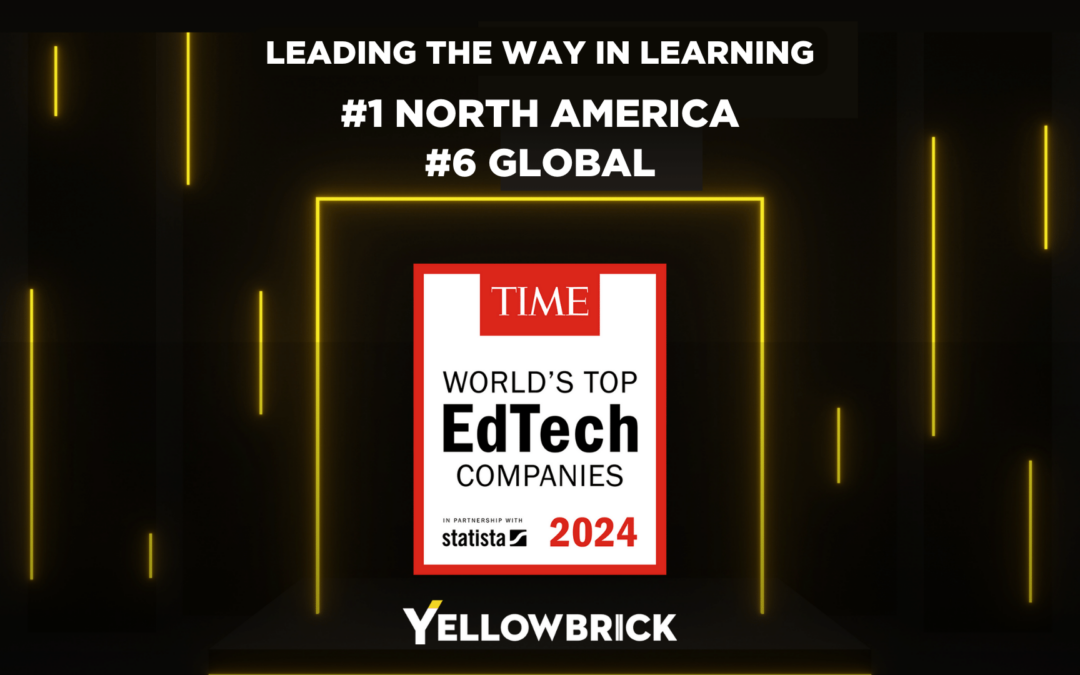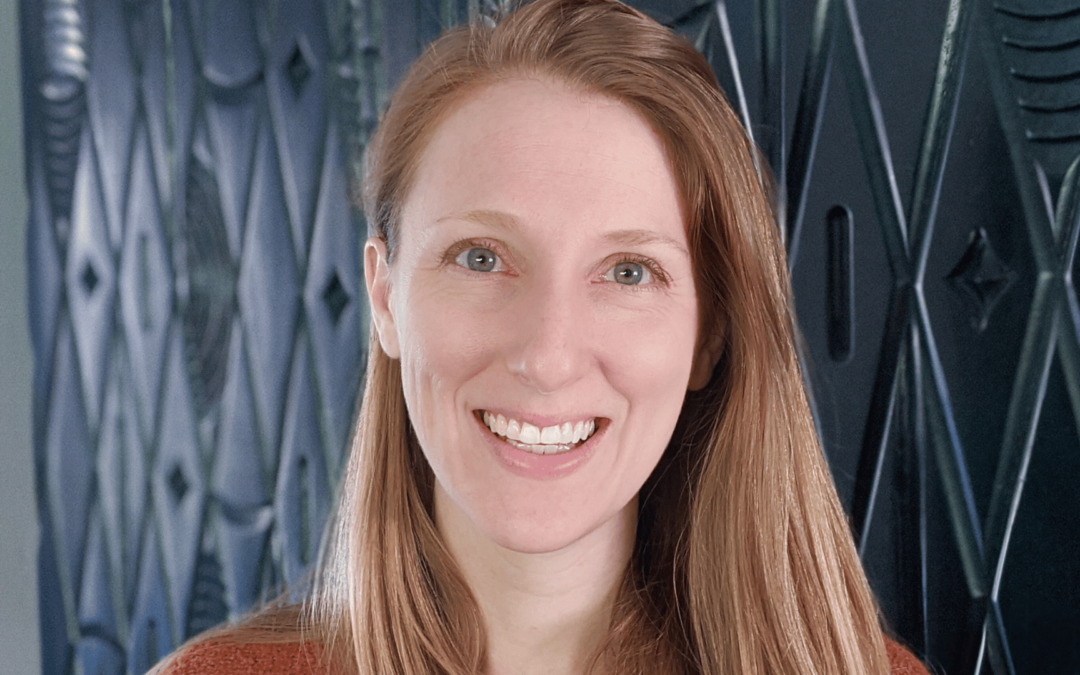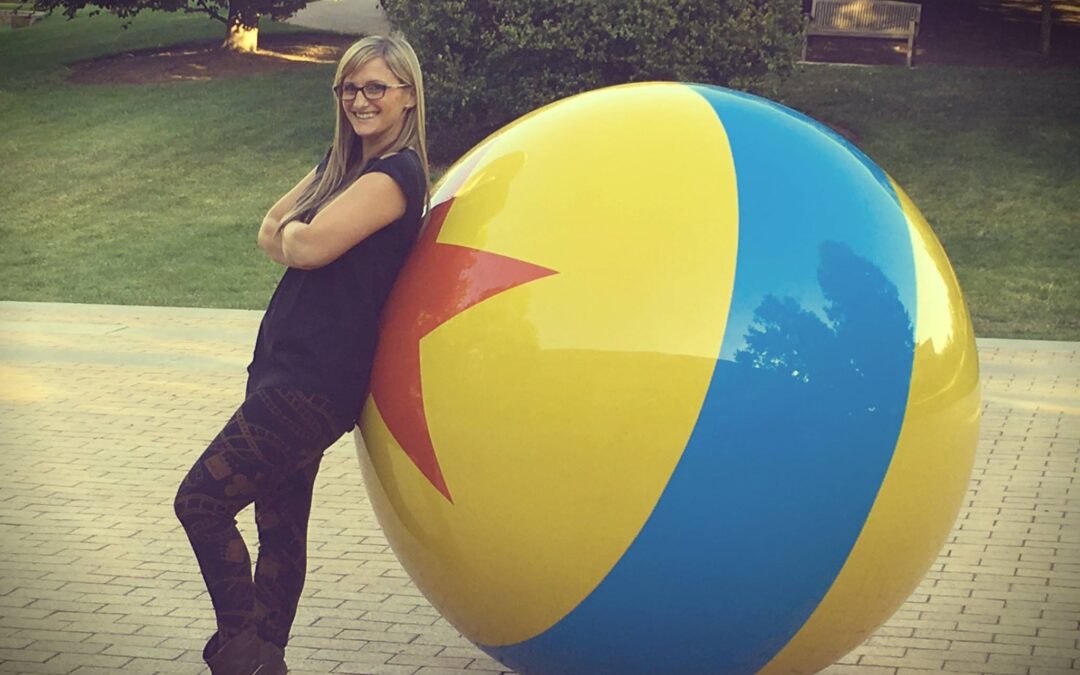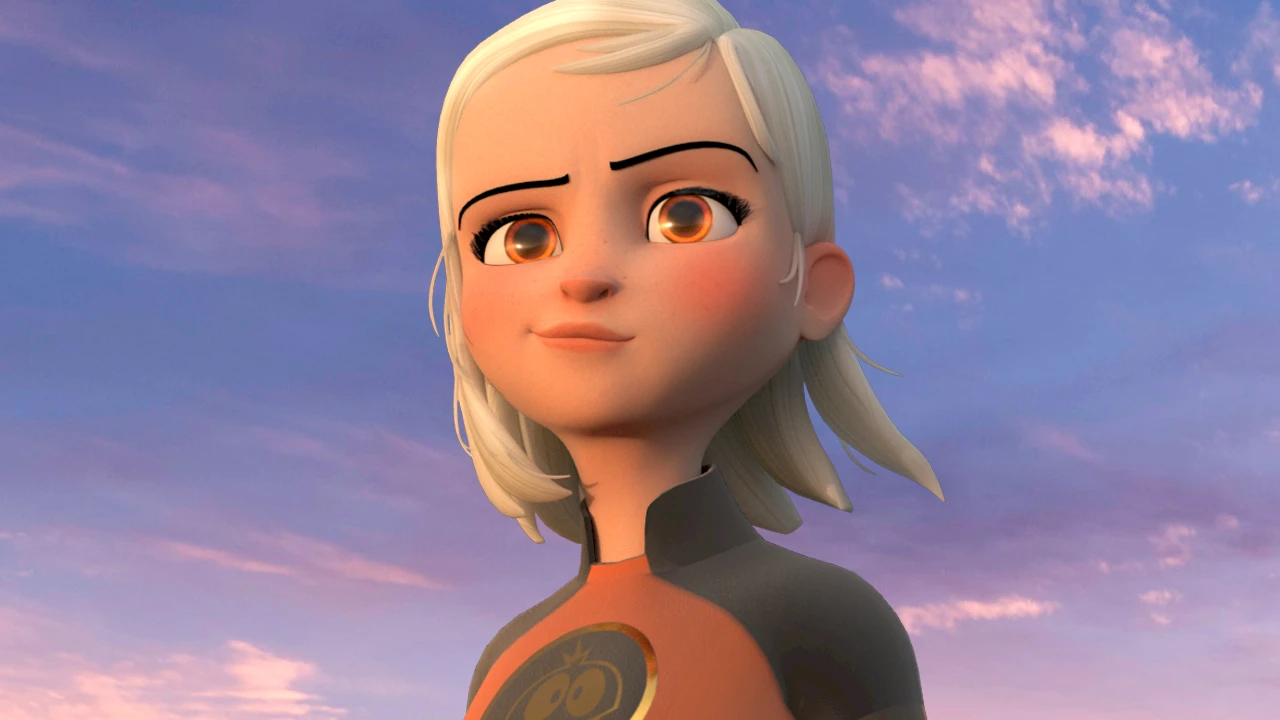
Horizon Zero Dawn is one of our favorite games of 2017—and of all time! So, we were ecstatic when we heard that three Animation Mentor alumni were nominated for Annie Awards for working on the game! We’d already caught up with rock star Guerrilla Games animator Niek Neervens, so this time chatted with Peer Lemmers and Richard Oud to learn more about their experiences. Without further ado, meet some of the incredible Annie-nominated animators behind Horizon Zero Dawn!
Animation Mentor: Were you both always interested in game animation? Tell us a little bit about your journeys after Animation Mentor.
Peer Lemmers: I think overall I’ve always just wanted to be an animator. I’ve never had a specific goal for the type of animation, because I feel that as an animator our main goal is to create believable worlds and characters no matter the situation—or in this case which genre.
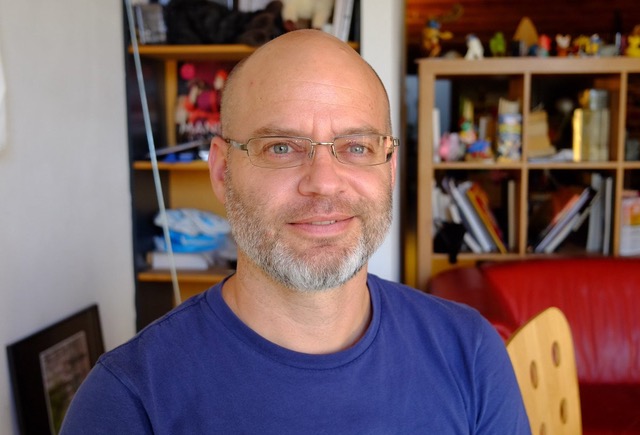
I don’t think, “Hey, I’m animating a robot for a game.” I think, “What does this robot think and how does it react in a way that’s relatable to human beings?” What makes the player go, “Dang that was intense!” or “That was really cool!”? I think our business is to entertain and communicate, and animation is our means of doing so. The idea of being typecast or stylecast or genrecast sort of bothers me, because I feel animation is about being creative and about coming up with ideas. I feel the best way to stay fresh is to tackle lots of different styles and genres because each time it forces me to rethink what I thought I already knew.
My journey after AM shows that, I think. I’ve worked in all corners of this industry at this point—from lonely remote freelancer to boutique shop to a giant corporate studio with 3,000 employees.
Richard Oud: I got into this industry graduating from art school with a mindset of wanting to work on feature films. I did my internship at DNA productions while they were working on The Ant Bully, and I knew that was what I wanted to do as an animator.

After graduating with my bachelor’s degree in computer animation, I knew my skillset was not up to the standards for feature film, so I applied for Animation Mentor to further develop my skills as an animator. Off course to be able to pay for the course I needed to have a job, but the industry was not that big in the Netherlands, besides Guerrilla Games being the only AAA studio in my hometown of Amsterdam. I figured I would at least drop my demo reel that I had from art school to see if they would be interested, never thinking I would actually make a change. Crazy enough they asked me in for a job interview since they were looking for a junior animator, and I got hired the week after.
My plan at that point was to get at least some industry experience while doing Animation Mentor in the evenings and weekends so I could make the switch to feature film after 2 or 3 years. However, when I started working on games I instantly fell in love with the process and ended up never leaving Guerrilla.
AM: Richard, as an animator, what compels you about video games vs. other mediums like feature film or TV?
Richard: I love the process of creating the interactive experiences you get when playing games. I like the idea of making something where people get to spend hours and hours in a world that you helped create. There is such a nice satisfaction when making hundreds of animations for a character, and when you pick up a controller, you are actually able to play and walk around as that character or in my case fight the characters.
In addition, the process of actually making games is very compelling to me. Instead of working on a shot for a couple of days/weeks until you are completely done, we get to work on a character for months or even years in this case building it step-by-step. It is a very iterative process where you focus on basic animations, first trying to build systems around it, and then polishing those animations on a much later stage when the game is much more balanced. It’s all about the gameplay, and we have to make sure the players have a fun experience while immersing themselves into a world that is filled with believable characters.
AM: Peer, you’ve worked on live action films, fully animated feature films, TV series, and video games. What compels you the most about each? Do you have a favorite to work within?
Peer: This is tough to decide because I think each of these requires a certain skill set all on its own. I do know that by having done all of them has greatly influenced my workflow and my appreciation for lots of—in this case—unknown artists who
simply have a passion to create and keep pushing no matter where they are.
Sometimes I run into animators where they say they don’t want to work in games or tv—they only want feature film or vfx or they only ever want to work in games etc. I think this is a bit of a simplistic look, to be honest. When I worked in TV, it totally kicked my butt and I had just come from 5 years of film. Then I had to be super quick in my decision making and find a new skill set and workflow that gave me time to still make it look decent. I had to juggle 900 frames a week for myself plus lead a team of upcoming animators who had to double that.
TV is hard work, but then to say that film is easy because 200 frames per week must be easy? No. Film requires a more elaborate idea and such refined performance and polish that it is actually quite intense.
And games? Games are pretty humbling, because most of your work is creating smaller transition animations such as turning left, turning right, or jumps, etc. The fancy combat moves are not the largest part of the work. Games are sort of special as everything has to be created, more so than in feature film. In games your animation becomes part of an interactive system with AI. So when you have an idea for a new animation, it ripples across to many other people and other departments that you cannot simply add or change things at random, which leads me to VFX 🙂
VFX, I feel, is a combination of all three of the previous—it’s hard work, it’s humbling, shots get changed all the time so you must have a flexible mindset. VFX requires exceptional body mechanics but also an understanding of characters and performance.
Your blocking needs to be much more refined in VFX vs. feature animation, as you’re working with live background plates with real spacing and timing—and usually live action directors who do not necessarily know how to interpret stepped mode blocking. So there’s a necessity for speed as well.
I think overall for all of these, the bar is being raised in production quality and animators now have to have a better skill set than what I had 10 years ago. So if you don’t land your dream studio or genre job right away—and if you want to be a good strong animator with the ability to last for the long run—just animate as much as you can on whatever you can. There’s fun to be had in all genres. In the end my fondest memories are of the people I’ve worked with.
AM: What kinds of shots/characters/creatures did you guys focus on for Horizon: Zero Dawn? Or did you get to do a bit of everything?
Peer: I came in a bit later and most of the creatures had already been blocked in, so the game was already up and running. My job was mainly to polish up existing animations or to create new versions within that template that the blocking stage had already provided. So I pretty much touched every robot in the game with exception of two or three.
There was really only one robot that had not been done yet, which was the Deathbringer, or old school war robot, on six legs. It went through heaps of changes even as I was working on it and took up quite a bit of my time, especially with it being omni directional and having six legs. In the end, it mostly walks around and shoots stuff at players but there were lots of attempts to have him do more crazy things—they simply never felt true to the character, so most of it didn’t make it into the game.
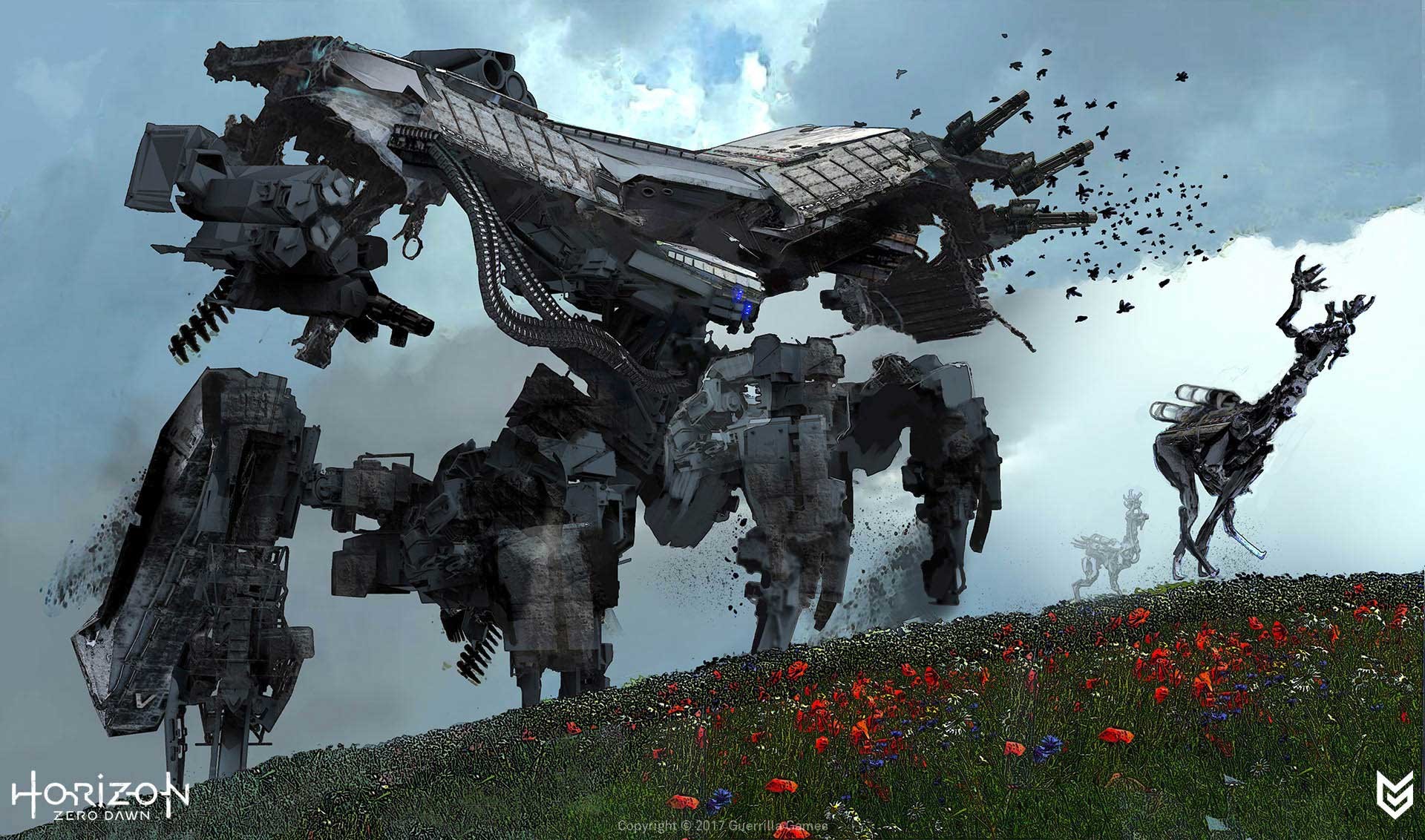
Deathbringer © Guerrilla Games
The other character I really enjoyed was the croc, Snapmaw! I had a lot of fun animating that one, as his build and silhouette with the long tail and long beak allowed for some fun animation stuff.
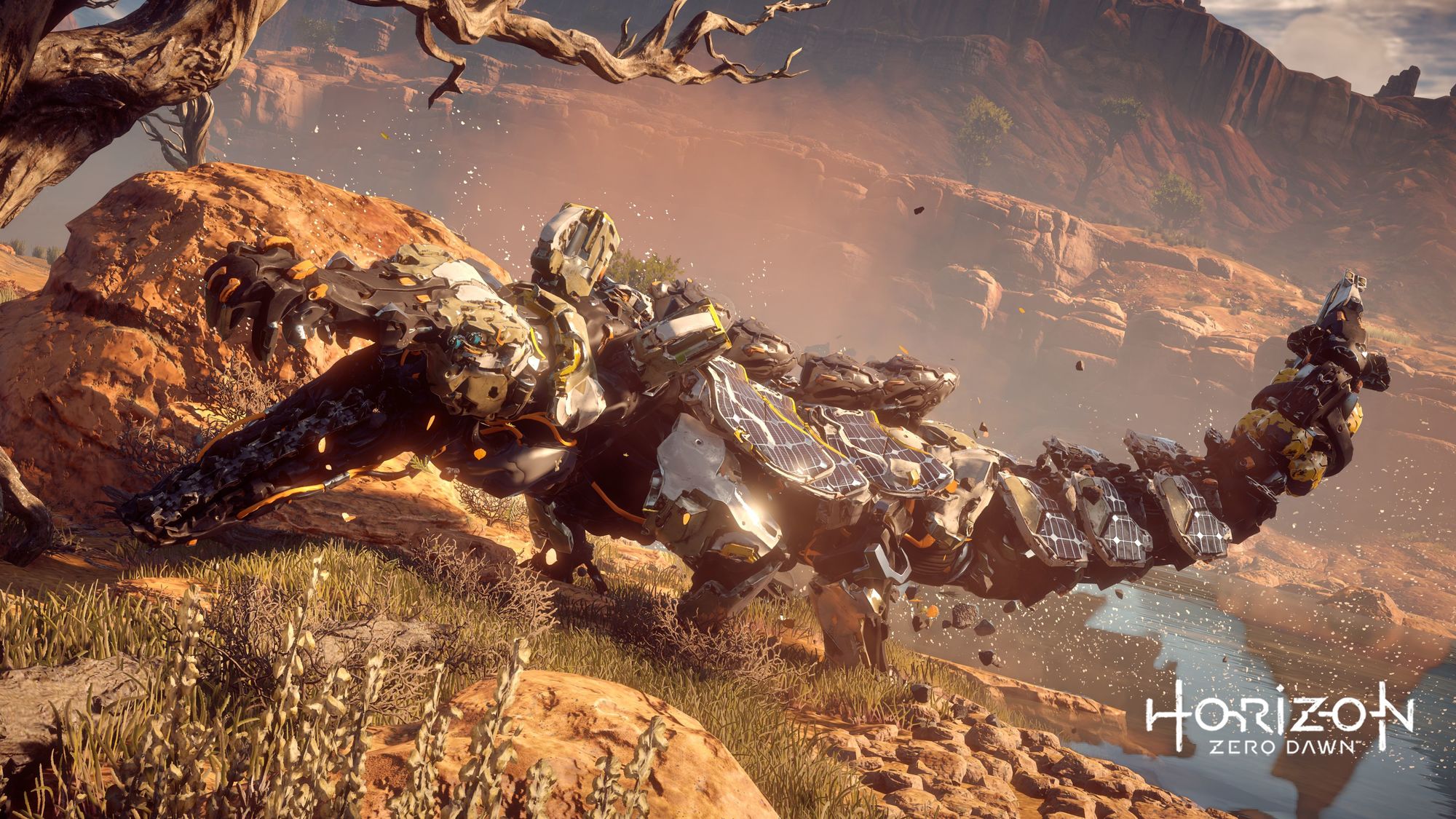
Snapmaw © Guerrilla Games
Richard: After finishing Killzone 3, I was part of a small group within Guerrilla that started to develop Horizon Zero Dawn while the rest of the studio was working on Killzone: Shadow Fall.
From the start, I was assigned to flesh out the animalistic robot creatures of the world, and I kept working full time on all of them until we finished the project. So instead of focusing on one character, I worked on all 25 robots in the game, including cinematics and commercials every once in a while.
AM: What were your favorite parts about working on Horizon Zero Dawn?
Peer: I had a lot of fun with creating attacks and testing them in the game environment. It was really cool to take your animation and then use Aloy, the main character, to shoot at them and watch how your animation on the robot would become interactive. Your character or creature starts to get a personality through the combination of all that separate animation now coming together. Also the team generally has a good sense of humor, which makes long days go faster 🙂
Richard: The amount of diversity in the robot creatures that we got to work on, trying to give each their own personality and feel as you engage with them. It was also a lot of fun to come up with a mix of animals we wanted to incorporate into each robots, seeing what would work well on the design of a robot.
Also, since the Killzone franchise was pretty much established when I joined Guerrilla 10 years ago, it was such a great experience to be creating something new from the ground up that we had not done before. That made the game super exciting and motivating to work on.
AM: Is it fun to play the games you’ve worked on, or do you just find yourselves thinking too much about all the behind-the-scenes stuff?
Peer: Well in this case I’m not skilled enough to play Horizon Zero Dawn. Haha. I’m too much of a strategy, turn-based game player, I guess. I tend to run and hack my way through, which only lets you get so far. The best part for me is always when I can share my work with my family and watch them play and watch how they react to it. If they smile and enjoy it, it makes me happy.
Richard: The weird thing is that you’re so busy developing your part of the game (in my case the robot creatures) that you don’t see a lot of things of the entire world being created until the game actually ships.
Since the world of Horizon Zero Dawn is so big, it’s almost impossible to keep playing the game while having to animate all the creatures at the same time. So getting to play Horizon after it shipped was kind of like my first time fully exploring the world as well, which was really nice to see everything come together after you’ve been working on it for so long.
Off course I always see animation on the robots where I think, “That could be a whole lot better,” but I don’t think there’s an animator out there that doesn’t feel like that about their own work.
AM: How did Animation Mentor help prepare you for your careers?
Peer: Without AM I would really never have done any of these things. In Holland there is nothing that can prepare you for working in character- and performance-driven animation. I remember starting AM and just wanting to soak it all up as much as I could. I watched every lecture two or three times and spend as much time as I could trying to learn this craft. I feel the mentors and community it provided me back then were invaluable, and I’ve actually ended up working with a lot of them and still have contact with quite a few.
Richard: The character course really helped me to shape up in terms of foundations. It’s one of the things we’re pretty focused on in within the animation department, making sure the right timing/spacing/rhythm and weight is on each animation. It really helped me develop my eye for good animation.
The Creature Animation Workshops came at the right time as well. I had never animated a quadruped in my life when I started to work on Horizon, and at the same time Animation Mentor started the Creatures Workshops, which were a perfect fit and helped me get those fundamentals needed to animated the robots.
AM: What advice do you have for students interested in going into video game animation?
Peer: Animate as much as you can and keep an open mind. We all go through the same learning struggles as animators, it’s the people who stick with it that you end up reading about and working with later on.
Richard: Work very hard and focus on the fundamentals. A lot of our work is based on having a great understanding of body mechanics, creatures or humans. It’s bound to happen—you’re going to have to animate something that you don’t have reference for, or are not able to record. Those are the times that you have to fall back on your knowledge of the fundamentals, both in the animation principles and body mechanics.
Also try to stay away from the obvious solutions or references and approach your work from a fresh new angle. This helps your work stand out and trains you in your workflow to keep doing something original.
Last but not least, keep learning and stay inspired. Whether it be with a good book, a documentary, a great movie or just by going outside and taking a walk watching the world around you. It’s so important to stay fresh and motivated, so figure out what works for you and remind yourself to stay inspired.
Be sure to check out our Q&A with Niek Neervens, another Annie-nominated AM alumnus who worked on Horizon Zero Dawn!
Want to be learn from professional game animators?
Start your animation quest now! Learn the industry ins and out from pro animators working in the game industry! Get more information today about Animation Mentor and our Game Animation Workshops.
